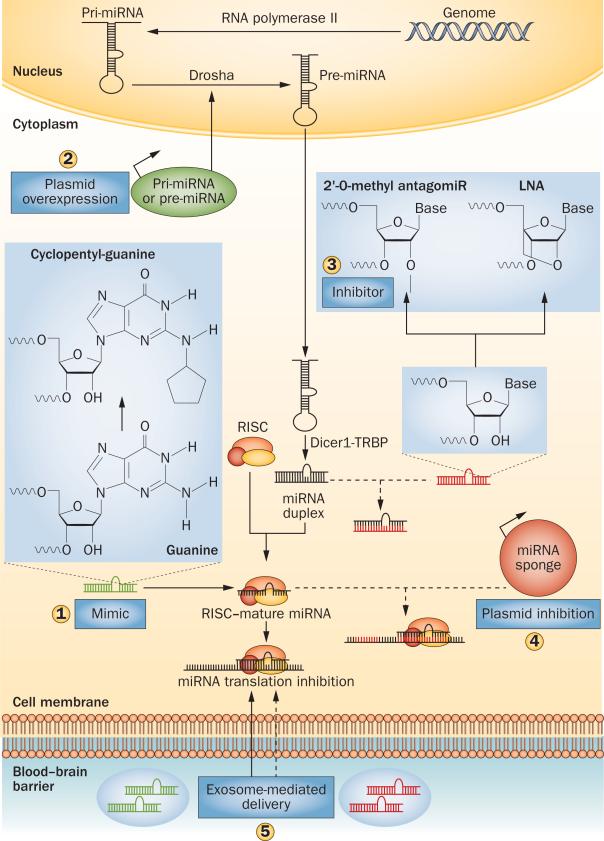Figure 1.
Therapeutic modulation of miRNA activity. miRNA mimics are molecules that can be used to overexpress miRNAs (1). They contain modified cyclopentylguanine bases, which enable association with the RISC within the cytoplasm to inhibit mRNA translation. Pri-miRNAs and pre-miRNAs can be expressed within cells by a plasmid, and the transcript is then processed by endogenous enzymes into mature miRNA (2). 2′-O-methyl antagomiRs and LNAs inhibit miRNA function by binding to mature miRNAs, thereby preventing their interaction with target mRNAs (3). Plasmids encoding an miRNA sponge transcript can be used for stable miRNA inhibition (4). The sponge transcript contains repeats of complementary sequences to the target miRNA (red regions of transcript), thereby sequestering miRNAs away from endogenous targets. Exosomes are BBB-crossing lipid vesicles that can deliver either miRNA mimics or inhibitors to modulate miRNA activity (5). Solid arrows indicate pathways that lead to increased miRNA activity; dashed arrows indicate pathways that lead to inhibition of miRNA activity. Abbreviations: BBB, blood–brain barrier; LNA, locked nucleic acid; miRNA, microRNA; pre-miRNA, precursor miRNA; pri-miRNA, primary miRNA; RISC, RNA-induced silencing complex; TRBP, TAR RNA-binding protein.

